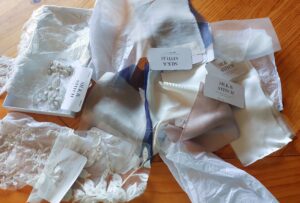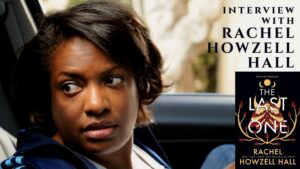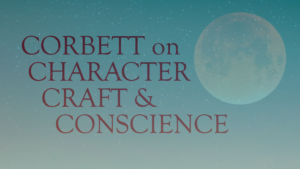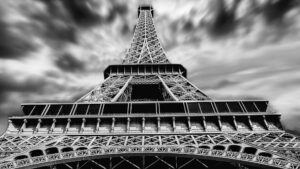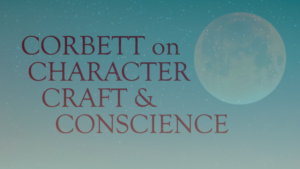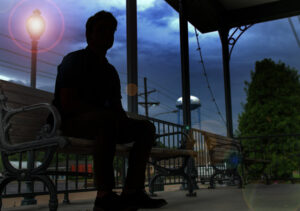RESEARCH
When it comes to creating a believable setting or background for a work of fiction, sensory inspirations are very important. Writers need to evoke a world in the reader’s mind which doesn’t just involve the visual and the auditory, but also hopefully bring the other senses into play—touch, smell, taste. It’s always been important to me, as I’m sure it is for many other writers, to experience the atmosphere of places I’m evoking through my stories: I like to actually walk in their streets, to see small details, to hear the soundscapes, whether that be birds, sirens, music, machines, to listen to the tone of voices. I like to experience the smells—good or bad, strong or faint—of those places, and their tactile textures, and the taste of the food you might find there. The sensory impressions you gain from all of it are invaluable. Even if a place is imaginary, I always base it on real locations, so the sensory aspects still ring true. And that means also being able to call up those impressions even when you are back home, and not just through your memory, but through aids such as notes, photos, and video and audio clips.
That works well for the visual and auditory aspects. But what about the other senses—touch, smell, taste? Their effect cannot be fully recaptured through photos, notes, or video/audio. More ephemeral than the visual or the auditory, those three senses are nevertheless crucial to evoking atmosphere: think for example of Proust’s famous madeleines. And it’s not just about place—it’s also about many other elements in a story that will make your fictional world feel absolutely real in a reader’s mind. How, for example, to describe the taste of a dish, if you haven’t tried it? How can you evoke the scent of a particular perfume, if you’ve never smelled it? Or the feel of a particular fabric, if you’ve never touched it?
For me, the answer is to collect concrete objects that bring my story-brain into direct hands-on contact with the sensory experience itself. Over the years I’ve done a lot of that. For example, for a novel I’ve been working on, I needed to understand how different types of silk fabric and lace embellishments might interact with each other and be used in design. I didn’t just rely on my imagination, my lived knowledge of how silk feels against the skin and my observation of a seamstress at work. I also purchased a range of fabric and lace samples which would enable me to see and feel first-hand just how a particular design might work with types of silk fabric. For the same novel, where there is a small but significant mention of the perfume Joy, I didn’t just rely on my memory of my beautiful grandmother’s favourite scent, I managed to find a miniature bottle of the vintage fragrance online, so I could experience the full power of it, and be able to describe it properly. Similarly, in another novel, recently published, where I wrote about the look, smell and feel of various flowers, I needed to actually have some on hand so I could accurately evoke them. In yet another novel, which is centred around food, I didn’t just cook several […]
Read MoreI’m guessing, given Tuesday’s election, most of us have been living in a world of, shall we say, heightened reality the past few days (if not weeks, or months). So, with no desire to diminish the importance or impact of that reality, allow me to offer a bit of a diversion, one I’ve had planned for some time: here’s an interview with Rachel Howzell Hall, known for her bestselling thrillers, about her turn to romantic fantasy with her latest book.
Rachel has been on a bit of a tear lately: her most recent previous novel, We Lie Here, was both a bestseller and nominated for a Los Angeles Times Book Prize. Before that she had three bestsellers in a row, What Fire Brings, What Never Happened, and These Toxic Things (also nominated for the Anthony Award, the Strand Critics Award, and the Los Angeles Times Book Award), with And Now She’s Gone garnering nominations for the Lefty, Barry, Shamus, and Anthony Awards.
With so much success in the thriller category, why jump ship and climb aboard an entirely different genre? I asked her that question (see below).
Meanwhile, The Last One, which comes out December 3, has garnered significant pre-publication praise:
The Last One can be pre-ordered now at Bookshop.Org, Amazon, B&N, Google Books, Kobo, Apple Books, or at your favorite local bookstore.
How did your agent (and/or editor/publisher) respond when you proposed a book so different from your past work?
Actually, it was my agent Jill Marsal who first reached out with the possibility of collaborating with publisher Liz Pelletier. I was thrilled at the opportunity—Liz is a genius. She was preparing to launch a new imprint from Entangled called Red Tower, filled with high-concept ideas she wanted to bring to life. I was honored to be one of the writers she thought would be a good fit for the project.
I get the feeling that this is a book you’ve been wanting to write for some time—have I got that right? If so, what kept you from getting to it sooner? How long did it take to imagine it, plot it out, and then get it down on the page?
I didn’t realize I wanted to write this book until I actually started. I was pretty intimidated by the idea of tackling not just one, but two new genres. I had never written a romance, and I had never written a fantasy. However, I soon discovered that I still had a lot to say—things I’d expressed before in mystery and crime—but now I had the opportunity to explore them in a world I could entirely create. A world without rules, until I made them.
I was offered the opportunity in July 2022 and began writing. I […]
Read More
Although part of me is convinced it’s still August, the Halloween season is upon us. After a couple of months of less regimented summer days, the cooler fall weather always brings with it a return to my regular work schedule. As a writer, this in part means a return to researching subjects I want to incorporate into my novels, stories, essays, and articles to make sure I get the details right.
In honor of this spooky time of year, I wanted to share some resources I’ve used in the past to learn about mystical and eerie topics. I hope you won’t find them too terrifying.
Divination and Fortune Telling
Human beings have been trying to predict the future for nearly as long as we’ve been on the planet. Over time, these practices, collectively referred to as divination, have taken many forms.
When it comes to making predictions for individuals, perhaps no method is as widely used as tarot card reading. One of the most straightforward online resources I’ve found for learning about the cards and their history is this HowStuffWorks article from 2023. There are also several good resources available online that explain the individual meanings of each card.
Other methods used to gain insight into the future include reading tea leaves, casting bones, scrying, and using an Ouija Board. Llewellyn’s Complete Book of Divination by Richard Webster is a great resource for learning about all of these and others, including tarot cards. The book also provides instructions, so you can try some of them yourself.
Witches Past and Present
According to some sources, our idea of witches being people who embody magical powers dates back to the ancient Greeks. But our modern, Western concept of witches being women dressed in black cloaks and pointed hats using their powers to do harm comes from the Middle Ages, when the Christian church made it its mission to rout out perceived heretics and rival belief systems.
One of the most well known manifestations of this effort is the 15th century tome Malleus Maleficarum, The Hammer of Witches. Steeped in misogyny, the book offered disturbingly detailed instructions for identifying and prosecuting witches, and provided justification for torturing and burning alive thousands of innocent people, mostly women, over the next three centuries. Copies of Malleus Maleficarum are available at many libraries. Or you can download a digital copy for as little as $4.99.
Contemporary witches have it much better than their forbears. Modern witchcraft, much of it based in the Wiccan religion, embraces feminine energy and power. While there is a lot of information out there on the topic, a few things stand out including this fascinating August 2018 article in The New Yorker and this piece published in The Atlantic in March 2020.
Monsters, Cryptids, and Bogeymen
Who can resist a good Sasquatch sighting story? Or a hair-raising tale about El Chupacabra raising havoc in the night? The Monster Spotter’s Guide to North America by Scott Francis has these and much more, including a […]
Read More
For today’s post I’m interviewing oral historian Alison Owings, whose latest book, Mayor of the Tenderloin, about San Francisco homeless advocate Del Seymour, came out this past Tuesday, September 10th.
The book has garnered considerable pre-publication praise, such as:
“Mayor of the Tenderloin is a charming, sometimes heartbreaking, tender, and inspiring story, important and beautifully written.”
—Anne Lamott, author of Almost Everything
“Alison Owings is a master of oral history. She is a great storyteller, and in Mayor of the Tenderloin, she has a great story to tell.”
—Dan Rather, author of What Unites Us
And Kevin Fagan remarked in a San Francisco Chronicle review:
Del Seymour is one of the hardest-working advocates for homeless people in San Francisco … and is regularly consulted for his street wisdom.
That wisdom came the hard way. He used to be a homeless crack addict and pimp, jailed many times before he shook drugs 14 years ago and started his uplifting [Tenderloin] tour and Code Tenderloin jobs programs. But what most people don’t know is that before all of that, he was an Army medic in the Vietnam War, a Los Angeles Fire Department paramedic, owner of a construction company and an electrician.
That’s where this book fills in the gaps. And how. Author Alison Owings lays out the at-times astonishing journey that led Seymour from a hard-knocks childhood in the Chicago projects through an adulthood that had him sleeping in a cardboard box in Sacramento, doorways and dive hotels in San Francisco, making and spending money like water legitimately as a businessman in Los Angeles and illegitimately as a pimp here, and finally shaking dope cold turkey when he hit rock bottom in a fight over $10 to $20 worth of crack.
Alison began her writing career as a journalist and has traveled extensively around the world. Her travels specifically in Europe inspired her to write a satire, The Wander Woman’s Phrasebook / How to Meet or Avoid People in Three Romance Languages, and her highly praised first foray into oral history, Frauen: German Women Recall the Third Reich.
Frauen set the stage for her next three multi-year projects, Hey, Waitress! The USA from the Other Side of the Tray; Indian Voices: Listening to Native Americans; and now Mayor of the Tenderloin: Del Seymour’s Journey from Living on the Streets to Fighting Homelessness in San Francisco.
Their thematic commonality? An examination of stereotypes. The implied question: when you picture a German woman of the Third Reich, or an American waitress, or a Native American, or a homeless person, do you see them the same way after reading these books?
Hi, Alison, welcome to Writer Unboxed. You come from a journalism background, but you’ve focused specifically on oral histories in your last four books. What prompted your interest in that unique approach?
In a way it’s an adjunct to journalism—asking questions. It began inadvertently, too, when I realized that retired German women I met who were living in a village in southern Spain were witnesses to the Third Reich and had more or less been ignored. They became the basis of Frauen and set my preference of “interview virgins”—first timers. I’m not too interested in interviewing […]
Read MoreTherese here to introduce you to someone near and dear to me: my son, Liam. ❤️
Liam’s screenwriting journey started as a Rod Serling fan. Inspired by Serling’s allegorical storytelling, he attended USC’s film school where his thesis film, You Missed a Spot, was selected in over 30 festivals internationally. Since then, he has worked on the production-side of the industry, most recently wrapping as the line producer’s assistant on FX’s Mayans MC.
You may have heard about the downturn of work in Hollywood, and so Liam has bided his time between jobs doing something he was likely, inevitably, genetically born to do: WRITE. That the short story he’s written, that he’s now determined to see produced (see Kickstarter), taps into a real-life wound should come as no surprise to you, WU community.
But I’ll let Liam tell you about that, WU-style. Take it away, kiddo.
As writers, we often face the challenge of crafting stories that feel authentic, especially when venturing into experiences we haven’t lived ourselves. This was the case for me when I set out to write my new short film, Venus in Furs, a psychological thriller that personifies heroin as a woman.
I’m a filmmaker living in Los Angeles, and my life was deeply impacted when one of my close friends from film school overdosed on drugs laced with the powerful synthetic opioid, fentanyl. I remember the first time I met him—we were attending a mandatory lecture on the cinema and music of the 1960s. We were sitting on either side of another student we both had a crush on and got into a pointless debate about The Doors, as if this poor girl remotely cared about some band from five decades ago. He demolished me in the debate. The guy was like Jim Morrison himself—long-haired, charismatic as hell, with a ribcage you could practically see through his t-shirt.
After the girl successfully escaped, the two of us grabbed lunch and admitted we were only trying to impress her. Instant friendship.
During lunch, our conversation abruptly ended when he mentioned he was going to leave to smoke some opium. I assumed he was joking at the time—I mean, I had just met the guy. What, opium? You mean that shit from the 1800s? But over time, I came to learn that he was affected by a powerful addiction that, to him, wasn’t some unshakable affliction as often depicted, but rather the means to radically take hold of his post-high-school freedom and live out the fantasy of the rock ’n’ roll lifestyle he so loved.
The last time I saw him, I visited his three-bedroom high-rise in Downtown Los Angeles, full of vintage records and a collection of Les Pauls paid for with credit cards he couldn’t pay off. It was the Fourth of July, and he was excited to launch fireworks at passing cars. At that point, I had witnessed the drug obliterate his ambitions. He had stopped attending classes, gained weight, and lost that magic spark that drew me to him in the first place. Heroin took everything from him. And yet he was so happy to participate in his own self destruction. In fact, sitting there with all his guitars and […]
Read MoreI know this is a dated reference, but there’s a scene in Transformers: Revenge of the Fallen (the 2nd movie) where Sam Witwicky and his companions enter the Udvar-Hazy Air and Space Museum in Dulles, Virginia to find the ancient decepticon, Jetfire (the SR-71). After locating him, they all run through the hangar doors into the parking lot airplane boneyard in Tucson, Arizona.
With no explanation.
If we’d been told there was a portal of some kind, or Jetfire teleported them there, I’d have been fine with it. Or if this had been some generic museum in a generic, unnamed place. But it wasn’t.
Maybe the explanation was left on the cutting room floor. 🤷🏼♀️ Or, it’s just entertainment and I shouldn’t care. But I happen to be the perfect storm of movie viewer who’s lived near both places, and because I’m a dork, the disconnect bothered me. Please tell me I’m not the only one who gets pulled out of a story by inconsistencies and mistakes.
Like the author who wrote about Prattville, Alabama as if it were in the middle of nowhere, far from civilization. (It’s a suburb of Montgomery.)
Or the book where the main character lives in a bungalow in Pismo Beach, California that’s on an isolated hill overlooking the ocean. (Um, all the private ocean-view land there has houses packed close together, even the big ones on the hill.)
Or TV shows like NCIS where they mispronounce Lompoc, Calfornia (it’s poke, not pock) and Ramstein (the “ei” is eye, not ee) Air Force Base.
Unfortunately, I could go on because I tend to fixate, but you get it. It’s the tiniest of errors made by people writing about places and things they’re unfamiliar with that can pull you out of the story and make you question everything else’s validity.
Or, is that just me?
In the early days of my writing, I got rightfully called out by a contest judge for calling a dock a pier. Now that I live near both, I cringe.
You can’t know what you don’t know, so that definitely won’t be my last error, but making this kind of mistake is one of my biggest fears because of readers like me. (Also, I really dislike looking stupid. Enneagram 5, if you’re into that.) It’s the reason I mostly write about places I’ve visited or lived, or completely make up a location (usually based on somewhere else, though, the way Sue Grafton based Santa Theresa on Santa Barbara), and still do extensive research.
(Sidebar: This is a whole topic on its own, but not knowing what you don’t know is also why paid sensitivity readers are important, especially if you’re writing about someone who’s part of a marginalized community.)
Even if you’re writing fantasy or sci-fi, you should probably know what’s come before you in the genre, and ensure the world you build makes sense. Made-up worlds can benefit from roots in real history and settings, and universal experiences, to ground the reader in an unfamiliar domain.
I know not everyone likes research, but for me the joys include:
Read More
I’ve just come back from a wonderful month-long trip to France to visit family and gather material for a new book within my Paris series of adult novels. Written under the name of Sophie Beaumont, the first of these, The Paris Cooking School, came out in Australia last year and is to appear in North America this August. (The second one, A Secret Garden in Paris, comes out in Australia this November). And whilst I went to France with ideas already for what this new, third novel was going to be about, with clear ideas of what I needed to visit for my research, the trip also showed me a number of unexpected threads which will greatly strengthen the original idea and enrich the story. That got me thinking about how you always have to be open to the unexpected, not only when you are in the early stages of planning, as I am now, but also further along. In the early stages of planning and research, to be in the place where you plan to set the story will often offer that unexpected turn. All the reading in the world about a place doesn’t necessarily give you the full picture; you might miss little details that can act as catalysts for scenes or developments in the story. Later, sticking too close to your original plan can also mean you miss out on an interesting twist or a new direction your character might go in.
In my case, as it was at such an early stage, I had only vague ideas as to what my characters might do for a living. Being close to my family members and sharing their lives for a while inspired me in unexpected ways. Watching two of my sisters work at their brocante stands (brocante is kind of second-hand antiques, and brocante fairs are hugely popular, regularly held events in France) gave me an unexpected idea for how part of my central intrigue might work in an immediately satisfying sort of way. Seeing my niece work on an assignment for her couture school in Paris sparked off another notion. Visiting the old, but still-exisiting, art school my grandmother had once attended gave me an idea for setting because of its position in the street in which it’s situated. Although I’d seen it on Google street view, the perspective an actual visit gave me, and walking the street itself in the company of another of my sisters, was enough to develop images that will help to make that setting even more solid. I expect that as I begin to get into the story, other things I’ve seen or experienced during that month, even if they have little initial or apparent relevance to the theme of my story, may pop up as either small insights or more important plot points. And I’m open to that, at least up to a point.
Because of course you can also destabilize a story by allowing the unexpected to completely take over; so you need to be aware of when that might happen. In my experience, this is especially marked around characterization, especially in taking the decision to add or delete a minor character because of an unexpected […]
Read More
In my last essay for Writer Unboxed, I made a case for not sharing early drafts. For ignoring other voices, especially critical ones, and blocking out the constant noise of everyday life to protect space for the imagination. I encouraged fellow writers, especially newer ones, to listen to the tentative, inchoate voice within. In this essay, I pitch another approach to the writing craft: reading. Finding one’s voice as an author can only happen when we unplug, turn off our phones, shut down our screens, and not just write, but read. Reading is my number one recommendation for how to improve as a writer.
In today’s cacophonous world the goal of sustained reading is harder to achieve than ever and, I would argue, more important. Before the pandemic and farther back, before constant iPhone use, I read fifty to sixty books a year, mostly novels. Post-pandemic, I can’t seem to finish thirty to forty. Those numbers might still sound large, but not if you consider that novel writing is my business. To write good novels, I need to read good novels, and sometimes bad ones. A key part of the practice of becoming a serious writer is to be a serious reader.
The reality of a waning attention span, though, looms over my, and perhaps your, literary life. Recent studies suggest the average undivided attention span for adults today has shrunk to just eight seconds. Eight seconds! Against a statistic like that, novels haven’t got a prayer. More and more people are listening to audio books as a cheat against distraction. You can drive, wash dishes, and walk the dog all while narration reaches some other part of the brain. Listening to a novel may require less concentration than reading a text, but I think still ‘counts’ as reading.
Still, there’s nothing as rewarding and engrossing as deep immersion in a book. It’s a complex experience that can be magical, taking a reader out of the present moment and their own body and into another world. Some people find listening to music transporting. Or watching a film. To my mind, those experiences don’t require the same meeting of imaginations that takes place between a reader and a writer.
But what does this have to do with crafting our own work? I’d say everything. As Margot Livesey has put it, we must “learn to read as a writer, to search out that hidden machinery, which it is the business of art to conceal and the business of the apprentice to comprehend.” As we absorb the written words of others, we not only learn about structure, character development, and all the other choices a writer must make, we also develop a crucial ear for language. So much of good writing is the shape and rhythm of sentences. By reading well-structured syntax, we internalize it and more easily make it our own. Familiarity with the vast array of written voices paradoxically offers a better chance to be innovative and original. How else to know what’s already been done so we don’t repeat it–or are at least aware when we do? In reading broadly, we position ourselves within the literary conversation that’s been carrying on for not just years, but generations.
So, what sorts of […]
Read MorePlease welcome C. S. Lakin to Writer Unboxed today! C.S. is an award-winning author of more than 30 books, fiction and nonfiction (which includes more than 10 books in her Writer’s Toolbox series). Her online video courses at Writing for Life Workshops have helped more than 5,000 fiction writers improve their craft. To go deep into creating great settings and evoking emotions in your characters, and to learn essential technique, enroll in Lakin’s courses Crafting Powerful Settings and Emotional Mastery for Fiction Writers. Her blog Live Write Thrive has more than 1 million words of instruction for writers meant to help level-up your writing. Welcome, C.S.!
Settings in fiction are not just backgrounds; they are living, breathing components of your story that can immerse readers in your narrative world. Whether it’s the bustling streets of a city or the tranquility of a countryside, the setting plays a crucial role in engaging your readers.
Fiction writers often ignore setting. Or it’s casually brushed over as if the writer begrudgingly knows something ought to be said about the place her character is in and just wants to “get it over with” and move on to the interesting elements in the scene.
An attitude like that shows a complete lack of understand of how powerful setting is.
Setting is perhaps the most versatile and useful element in fiction. It can reveal character motivation, backstory, past trauma, and the story’s cast, as well as reveal emotion and supply tension. If you haven’t considered how powerful setting can be, take some time to work on this key element in your fiction.
To help you get started, let’s explore five essential tips to help you understand the various elements of setting and create memorable, immersive worlds for your characters.
Tip 1: Choose Your Locale with Purpose
The choice of where your story unfolds can significantly impact your narrative. Consider locales that align with your plot, characters, and the emotional atmosphere you want to create. Best-selling author Emily St. John Mandel demonstrates this in Station Eleven, where selects settings like the post-apocalyptic wasteland and the Traveling Symphony’s nomadic existence to enhance the sense of survival, loss, and the enduring human spirit.
In Station Eleven, the world has been ravaged by a devastating flu pandemic, leaving behind a desolate landscape. The setting of a post-apocalyptic world serves a dual purpose. First, it magnifies the sense of isolation and vulnerability felt by the characters, emphasizing the fragility of human existence. Second, it becomes a canvas upon which the resilience and creativity of the characters are painted.
The corridor was silent. It was necessary to walk very slowly, her hand on the wall. A man was curled on his side near the elevators, shivering. She wanted to speak to him, but speaking would take too much strength, so she looked at him instead—I see you, I see you—and hoped this was enough.
No more flight. No more towns glimpsed from the sky through airplane windows, points of glimmering light; no more looking down from thirty thousand feet and imagining the lives lit up by those lights at that moment. No more airplanes, no more requests to put […]
Read MoreA dear friend of mine is having her name changed today. After her 20-year marriage ended in divorce a year ago, she decided to go back to using her maiden name, and today is her day in court, where she’s making the change both legal and official.
It is a powerful gesture, in multiple ways. It excises the ex-husband’s name from her life, but it does even more. My friend’s maiden name happens to be a beautiful and poetic word, literally a word that many people love and even celebrate. Her ex-husband’s surname? Spoken aloud, it sounds more like a cross between a rare skin disease and a Taco Bell appetizer. (Okay, I might be a little biased on that front; I was never fond of the man. But I digress…)
In preparing for today, my friend learned (as countless women have learned when either starting or ending a marriage) that the process of getting one’s name changed can be quite the hassle. But in her case, it’s totally worth it. For her, it simultaneously represents both a return to who she was, and a new beginning. In short, she knows something that I want to remind you of today:
There is power in names. And we as writers should try to leverage that power.
I see a lot of writers going with character names that are rather… generic, if I’m being honest. And while those names might tick off all the boxes for being realistic, believable, and/or even period-correct, I don’t think that playing it safe like that is always the most compelling approach. So today I want to look at the greater impact you can evoke by making bolder choices with your names. But being an open-minded guy who can usually see both sides of an issue, I’ll also offer a couple of examples where seemingly generic names were the perfect choice. But let’s start on the non-generic side of things…
The good, the bad and the ugly
Many authors take advantage of the fact that some names just inherently sound good or bad. Hang on – let me clarify. I’m not saying the actual name sounds good or bad; I’m saying it makes the character sound like a good or bad person. While this is particularly prevalent in fantasy and graphic novels, a good- or bad-sounding name can really help establish a reader’s perception of your character in any genre.
Some names that “bring the good” include Aragorn, Atticus Finch, Forrest Gump, Frodo Baggins, Hermione Granger, Holly Golightly, Jack Ryan, Joe Christmas, Huckleberry Finn, Nero Wolfe, Oliver Twist, and Phileas Fogg – I’m sure I’ll think of three dozen better examples the moment this post is published.
By contrast, some names immediately give you bad vibes, letting you know all is not right with this particular character. I’m writing this paragraph on Valentine’s Day, and I doubt that back in elementary school any of us would have wanted to receive a Valentine from a member of this motley crew: Draco Lucius Malfoy, Cruella de Vil, Dracula, Madame Defarge, Hannibal Lecter, Lord Voldemort, Miranda Priestly, Severus Snape, Nurse Ratched, or Simon Legree. One could argue that some of these names are pretty heavy-handed. And yet, look at how successful those not-so-subtle names have been in entrenching […]
Read MoreImage – Getty iStockphoto: Joshua James
Girl Power and Boys’ Struggles
As we approach the new year – today on the winter solstice – 2022 seems incalculably long and complicated.
Can this be the same year in which Putin opened his savage land grab in Ukraine? The news industry in which I work is calibrated to promote myriad headlines at once. So many narratives have competed for our attention this year, among them midterm elections; the Supreme Court’s overturn of Roe v. Wade; book bannings; intensifying climate conditions; royal ascent and dissent; inflation and rate hikes; select committee hearings and subpoenas; World Cup controversies; the still-ongoing pandemic; Trump’s travails; Musk’s management; a renewed NASA; a reinvigorated NATO; and a House of the Dragon that’s not the Chinese restaurant on Main Street in Denison, Iowa.
Richard V. Reeves
Amid all that and more, Richard V. Reeves‘ new book, released in late September, has punched through the distractions for many of us. It brings into the sharpest focus yet a deepening crisis. For years, one iteration of that crisis has been responded to handsomely by publishing. But as yet, the flip side is getting far less traction in the book business.
Reeves’ Of Boys and Men: Why the Modern Male is Struggling, Why It Matters, and What To Do About It is published by the Brookings Institution Press in the States (September 27) and by Swift Press in England (September 29).
David Brooks at The New York Times called Reeves’ book, “a landmark, one of the most important books of the year.” Many similar accolades have poured in. I agree with them. And yet the book may have flown below your radar because its focus is uncomfortable for many of us to face. Its mission may feel politically incorrect. It is, in fact, exactly the opposite.
US cover: Brookings Institution Press
Reeves goes to the mat to stress his support for the progress that women and girls have made with remarkable speed. “The gender reversal in education has been astonishingly swift,” he writes. “It is like the needles on a magnetic compass reversing their polarity. Suddenly, north is south. Suddenly, working for gender equality means focusing on boys rather than girls. Disorienting, to say the least. Small wonder our laws, institutions, even our attitudes, have not yet caught up. But catch up they must.”
And publishing is one of those institutions. So generously has book publishing worked to lift up and serve its fine women’s consumer base that I’ve written before here about my concerns for men’s unmet interests and needs in literature. From a purely commercial standpoint, I see this as leaving male money on the table. But there are pressures here more crucial than revenue.
One of the things that industry players can feel best about is the robust role the book business has played in creating and providing literature for girls and women. Think of the last few years’ accelerating rollout of uplifting guidance, powerful self-esteem literature, and incisive introductions of formidable women in […]
Read More
